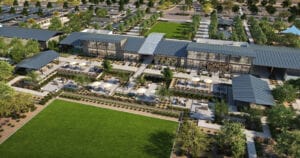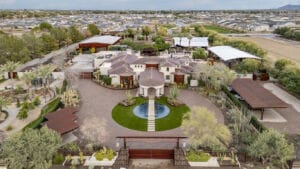The Greater Phoenix office market remained relatively healthy during the second quarter, despite business interruptions caused by stay-at-home orders and the impact of coronavirus, according to a report from Colliers International in Arizona. The office sector posted its 33rd consecutive quarter of positive net absorption and office vacancy remains below 15 percent.
The Phoenix-Mesa-Scottsdale MSA unemployment rate peaked in April at 12.5 percent. Yet, Arizona’s economy was quick to get back into action when the executive order to stay at home was lifted on May 15. Our MSA was compared to 51 other metropolitan areas with a 2010 Census population of one million or more. We posted the lowest jobless rate in the month of May at just 8.3 percent. According to WalletHub, eight valley cities here in Arizona ranked among the top 15 cities nationwide whose unemployment rates are bouncing back.
The Greater Phoenix office market has been closely watched as layoff and furlough decisions were made by large employers in the area. Sublease space in Phoenix increased 82 percent over-the-quarter quarter and 54 percent year-over-year. The largest sublease space to hit the market was at Norterra West, where USAA vacated 147,638 square feet.
Despite increases in sublease inventory, Greater Phoenix experienced a healthy second quarter with 234,057 square feet of net absorption. Class A buildings in Tempe and Chandler experienced the strongest absorption during the quarter. The pandemic essentially shut down in-person tours of office space, but the market quickly pivoted to virtual tours. Many tenants paused new deals and businesses nearing their lease expirations focused on short-term renewals as a method of postponing long-term decisions during the uncertain times. In-person tours began again in June and activity has been strong. The number of prospective tenants in the market has declined and the remaining months of this year will provide more insight into how companies will re-evaluate their office footprint.
The Greater Phoenix office market vacancy increased 30 basis points over-the-quarter to 13.1 percent. Direct vacant space decreased 50 basis points over the quarter, but sublease vacancy increased 33 basis points. The inventory of sublease space increased more than 500,000 square feet during the second quarter. The lowest vacancy is found in Southwest Phoenix, which is a submarket heavily occupied by government agencies. This submarket is holding steady at 5.4 percent vacancy. Tempe, which is consistently one of the most popular submarkets for office space, faced multiple move-outs this past quarter, which drove up this area’s vacancy 3.1 percent to finish June at 9.7 percent vacancy. Class A space in Tempe remains well occupied and the area offers very limited options for large tenants. Chandler has posted the largest decrease in vacancy this year, dropping to just 5.5 percent year-over-year.
Sublease space definitely impacted the city’s declining vacancy trend during second quarter. However, the sublease space entering inventory has been in very well-located buildings and the suites offer attractive build-outs. Because of this, the sublease space is highly marketable and is expected to attract tenants.
The office market delivered more than 400,000 square feet of new space during second quarter, 60 percent of which was leased upon completion. Medical office buildings accounted for 57 percent of the new office space delivered. Phase V of Rio2100 in Tempe added 170,680 to the market and Maricopa Integrated Health Systems will be occupying a new building in Glendale that totals 127,000 square feet. The pipeline remains strong with more than 3.2 million square feet of office space under construction and more than 50 percent of that space is pre-leased. Projects in Tempe, Scottsdale South and Scottsdale Airpark all broke ground during the pandemic, while other large business parks that were planned for construction starts have been put on pause.
Rental rates held strong during second quarter and rose 1.1 percent over the quarter to a current average of $25.71 per square foot. Many have assumed rental rate discounts would begin, but the market has not reacted in that direction. Asking rents in Class A buildings increased 0.26 percent last quarter and Class B buildings experienced 1.56 percent rental increases during the quarter. Sublease space has not negatively impacted rental rates primarily because sublease rates are competitive to market rates and it offers the advantage of immediate occupancy.
The number of office space investment transactions completed last quarter was approximately half of the number posted first quarter. But the sales volume increased 6.25 percent during second quarter. Three transactions with financial tenants drove the increase in volume. These sales involved Northern Trust building at 2160 E. Elliot Rd. ($430 psf), Wells Fargo at 8601 N. Scottsdale Rd. ($309 psf), and Cardinal Financial at 14614 N. Kierland ($300 psf.) The median sales price for office space decreased 3.2 percent during second quarter to $164 per square foot and cap rates rested at 7.4 percent. Approximately 60 percent of the quarter’s sales took place in the Scottsdale Airpark and Central Scottsdale submarkets.
The forecast for the Greater Phoenix office market remains optimistic, despite the uncertainty of the pandemic. Until a vaccine is developed, many employees will continue working from home. Office building standards for health and safety will influence the market somewhat, but Greater Phoenix continues attracting businesses from other states and remains one of the country’s most dynamic growth cities.



